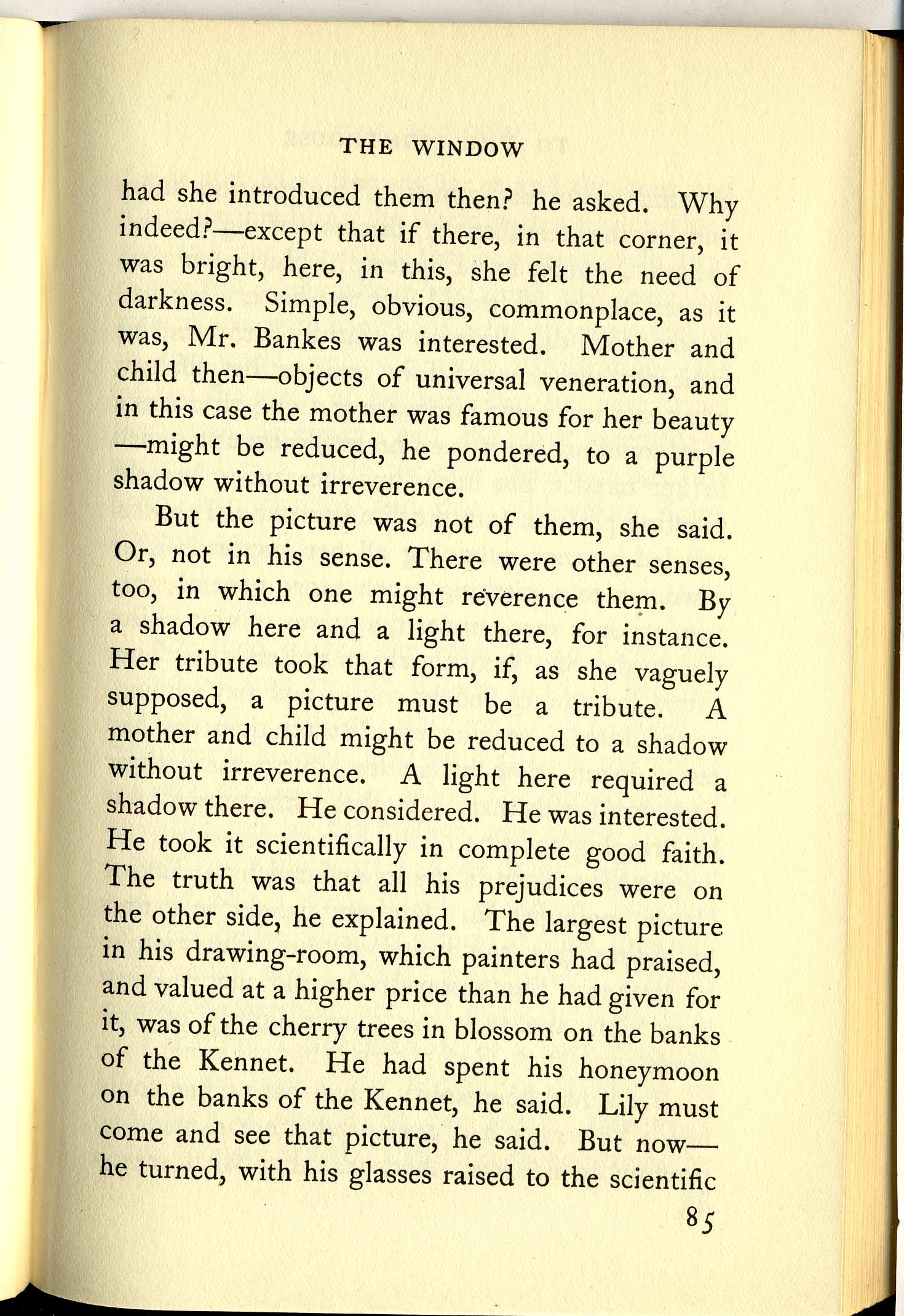
THE WINDOWhad she introduced them then? he asked. Whyindeed?—except that if there, in that corner, itwas bright, here, in this, she felt the need ofdarkness. Simple, obvious, commonplace, as itwas, Mr. Bankes was interested. Mother andchild then—objects of universal veneration, andin this case the mother was famous for her beautymight be reduced, he pondered, to a purpleshadow without irreverence.
But the picture was not of them, she said.Or, not in his sense. There were other senses,too, in which one might reverence them. Bya shadow here and a light there, for instance.Her tribute took that form, if, as she vaguelysupposed, a picture must be a tribute. Amother and child might be reduced to a shadowwithout irreverence. A light here required ashadow there. He considered. He was interested.He took it scientifically in complete good faith.The truth was that all his prejudices were onthe other side, he explained. The largest picturein his drawing—room, which painters had praised,and valued at a higher price than he had given forit, was ofthe cherry trees in blossom on the banksof the Kennet. He had spent his honeymoonon the banks of the Kennet, he said. Lily mustcome and see that picture, he said. But nowhe turned, with his glasses raised to the scientific









